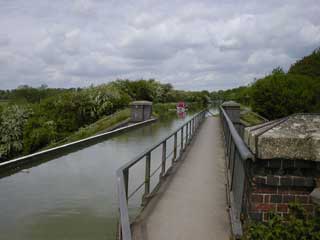

Benjamin Bevan, an engineer of Leighton Buzzard, designed the aqueduct and it was manufactured by Reynolds & Company at Ketley Iron Works in the West Midlands. The design was successful and the aqueduct has remained solid and in use since January 21 1811 with only two closures for maintenance in 1921 and 1986.
